Fresh sage is a treat. Aromatic, spicy, and flavorful. Unfortunately, fresh sage is hard to come by unless you grow your own. Grocery stores often have a small selection, and what you’ll find is usually wilted, brown, or overpriced. Buying enough sage for a recipe can set you back a pretty penny.
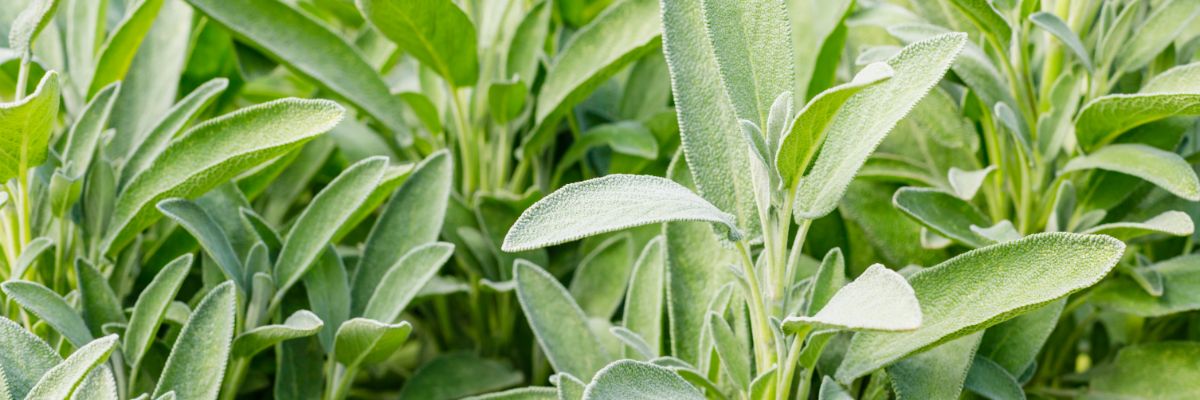
Sage is one of the famous Mediterranean herbs, meaning it basically thrives even with neglect. Growing your own is easy, even for those without much of a green thumb. If you are like me, one plant just won’t do. Three or four plants are needed at a minimum to ensure a reasonably continuous supply. I prefer having about half a dozen established plants for my kitchen use.
Common sage, or Salvia officinalis, is used in many dishes, from poultry to pasta and gnocchi. It is a critical ingredient in many soups, homemade sausages, and stuffings. It is also used in teas and in baking.
If you have too much sage to use fresh, dried sage made from your own plants is far superior in aroma and flavor to the stuff you can buy in a jar. Once you have a nearly unlimited supply of free sage, you may find that six plants are not enough!
Jump to:
Ways to Propagate Sage
Sage is an easy herb to propagate. New plants can be grown from cuttings and from seeds. Simple, reliable, and fast, sage is a great plant to try if you are new to the propagating game.
How to Grow Sage from Cuttings
To grow a new sage plant by taking a cutting

- Select a stem about four inches long. Snip it with clean scissors or secateurs.
- Gently remove the leaves off the bottom two inches of stem, leaving only the top set of leaves. You may want to use scissors to trim the leaves rather than just pull them off. Sage nodes can be fragile; if they rip off, the roots won’t grow.
- Proceed to the directions below for rooting in water or in another medium.
If rooting in water
- Place the new cutting in a clear-walled container filled with clean, non-chlorinated water.
Tip: If your tap water is treated with chlorine, you may need to use another source or let your water sit on the counter for 24-48 hours to allow the chlorine to dissipate. You can also boil it for 15 minutes if you are in a hurry, but don’t forget to let it cool.
- Change the water every 3-4 days to keep it fresh, and keep the jar in a brightly lit and warm spot out of direct sunlight.
- Roots will grow in 1-3 weeks, depending on the plant’s vigor and the environment. Look for strong, white roots an inch long.
- Once a nice batch of roots has grown, pot up your cuttings in moist potting mix in small pots. Four-inch rounds or squares will work fine. Grow them for a couple of weeks in their pots to let them get used to living in soil vs. water. Harden them off and transplant them when they create new green growth.
If rooting in soil or another medium
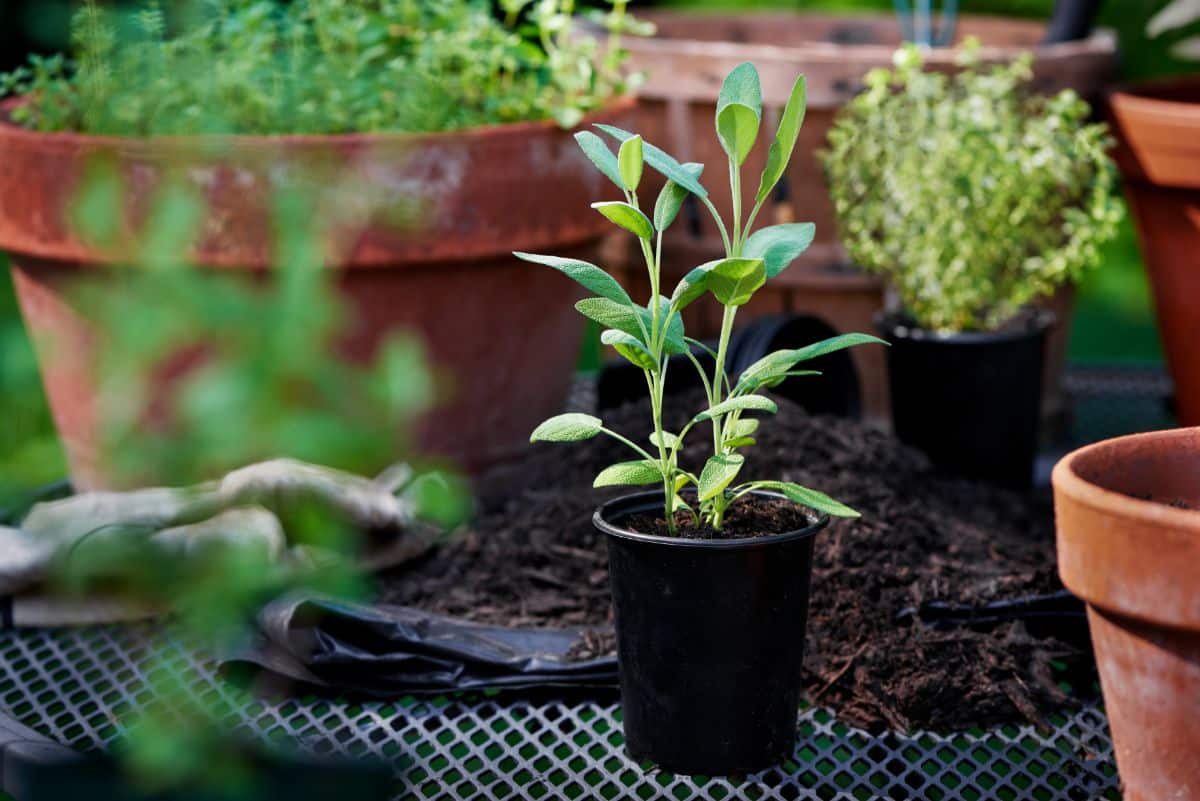
- Fill a small container or pot with a well-moistened seed starting mix, potting soil, or other media such as rock wool or damp sand. Deep 50-cell trays or deep 4-packs work well for this. But any small container with drainage will do. Sometimes I root cuttings in old yogurt containers with holes in the bottom.
- Poke a hole into the medium for your cutting. A stick or pencil will work fine. Sage stems are not stiff enough to just stab into the medium.
- Optionally, moisten the end of the stem and dip it in a rooting hormone. Sage is willing to root anyway, but your success rate will be higher if you give it some help.
- Place or ‘stick’ your cuttings. Firm the medium around the stem and place it in a bright location out of direct sunlight and wind.
- In 2-3 weeks, you can check the progress of your new plants’ roots by gently giving the stem a little tug. If there is resistance, your sage cutting has grown roots and is ready for potting up. You may see roots peeking out the drainage holes if they are in four packs or other trays.
If your cuttings have room in their current container, grow them for a few weeks before planting them in their permanent home. Harden them off before shocking them with the full sun of the garden.
How to Grow Sage from Seed
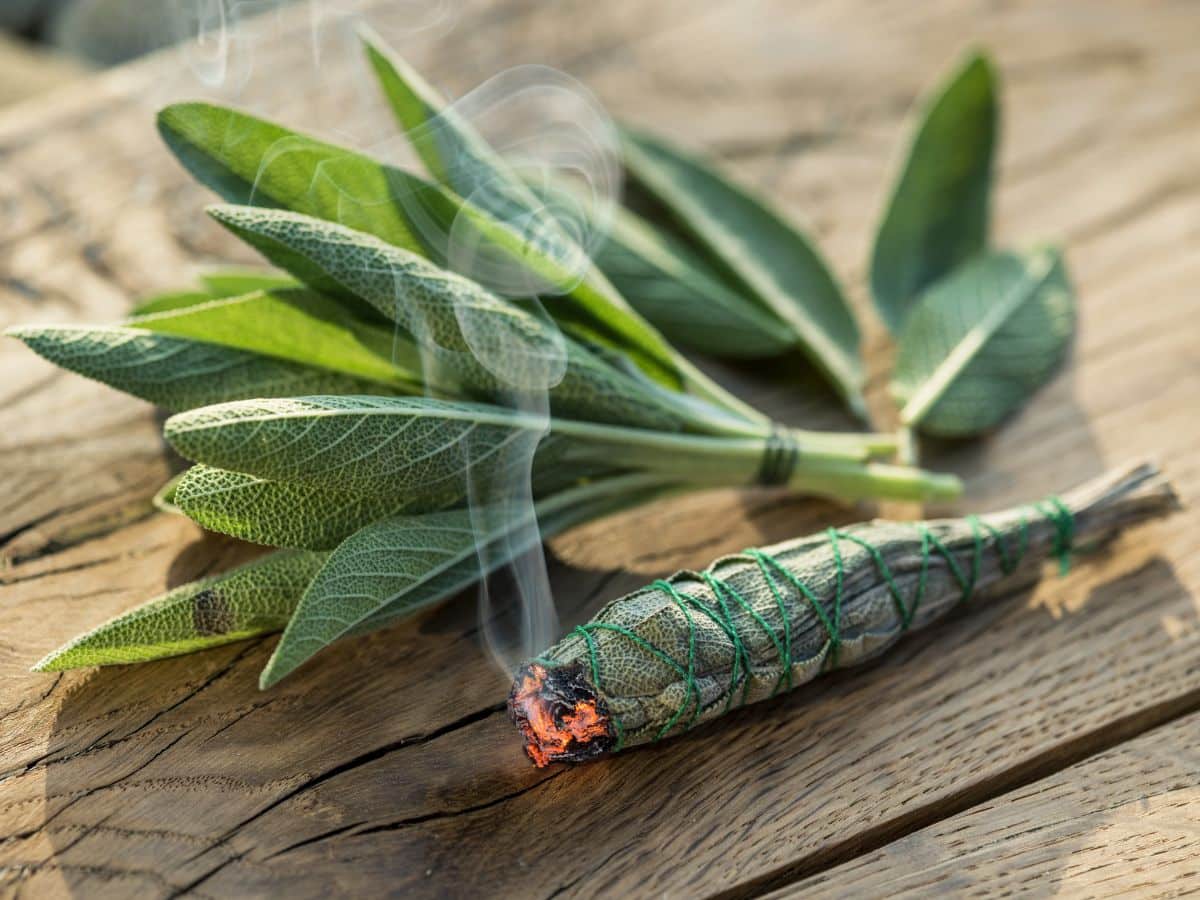
Sage can be grown from seed, which is not as hard as you may think. Many sage species and cultivars are available online.
Garden sage (Salvia officiana) is what we use in the kitchen, and white sage (Salvia apiana) is used for smudging. There are also ornamental sages, Russian sages (Saliva yangii), and more. Your local garden center will likely carry only one or two of these, so if you want to branch out, grab the seed catalogs.
To start sage from seed:
- Prepare your seed starting medium and trays. Any potting or seed starting mix is fine–nothing fancy is required for sage. Fill the tray or cell packs with well-moistened soil. It should be damp but not wet. Sage starts well in soil blocks too.
Tip: Pre-moisten your seed starting mix before sowing seeds. It is much easier than trying to thoroughly wet it afterward planting.
- Sage seeds can be planted about ¼” deep. Sow 2-3 seeds per unit, then thin to one per unit after germinating.
- Once they have sprouted, place them under lights or in a sunny, protected, warm location outside.
- Keep the soil moist. Don’t let it dry out; your seedlings are sensitive to dry conditions.
- When they have 2-3 sets of true leaves, they are ready to pot up into a larger container. Plant outside in the ground when they are about 4-6 inches tall and have good leaf growth.
Dividing Sage Plants
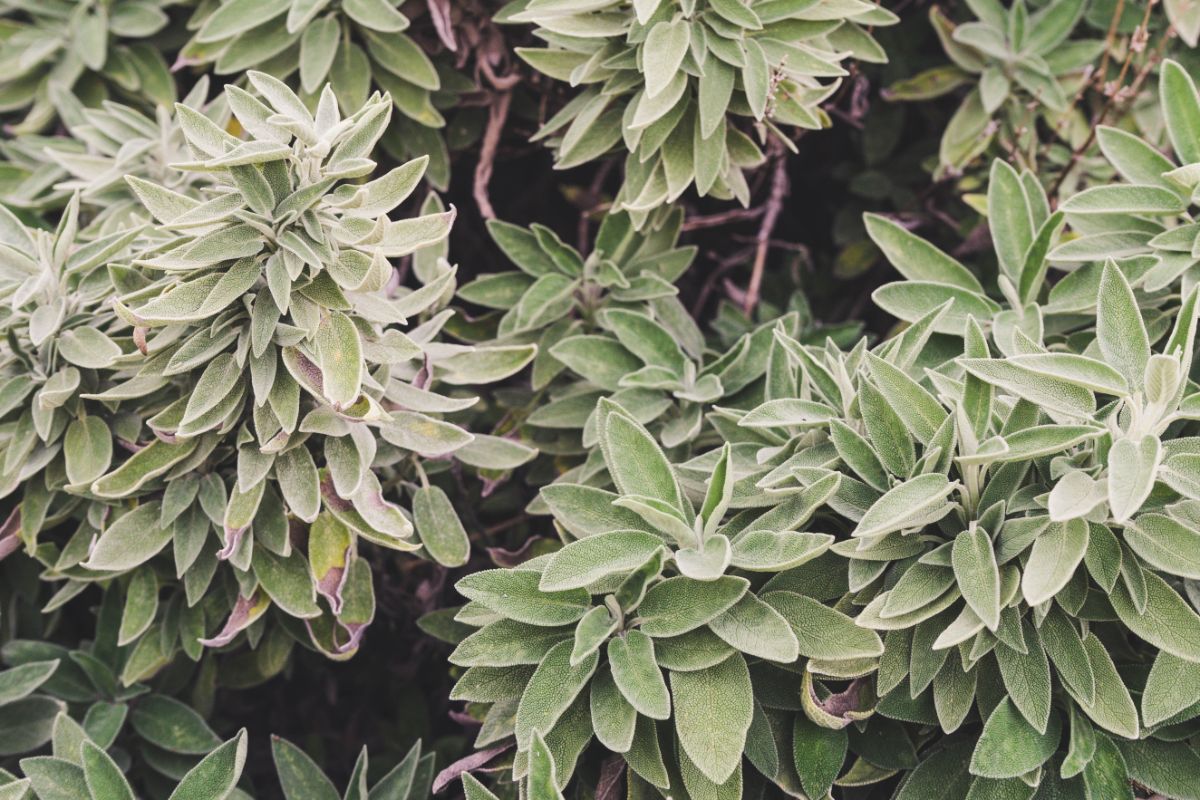
Sage is a perennial in about USDA zones 4-8. The sage you planted this year will return and likely be several times as big next year. Eventually, it may be too big for its spot or become woody and shrub-like. Either way, you can divide it and get new plants for free.
- In early spring, once the new shoots have started to poke up, clear away all leaves, old stems, and mulch to make it easy to see what you have to work with.
- Dig around the plant using a soil knife or garden trowel to loosen it. Lift the entire plant and rootball out of the soil.
- Break or cut the rootball into several new plants. You can use your thumbs to pry the rootball in half or use your soil knife to help separate them. Each new piece should have a good hunk of roots and several healthy, undamaged shoots.
One large sage plant might yield six or more new plants in this manner.
- Transplant young sages to their new homes in your garden, or pot them up, give them TLC for a week and gift them to a friend who likes sage. They make excellent gifts for people who like to cook, even apartment dwellers.
Growing Sage in a Container
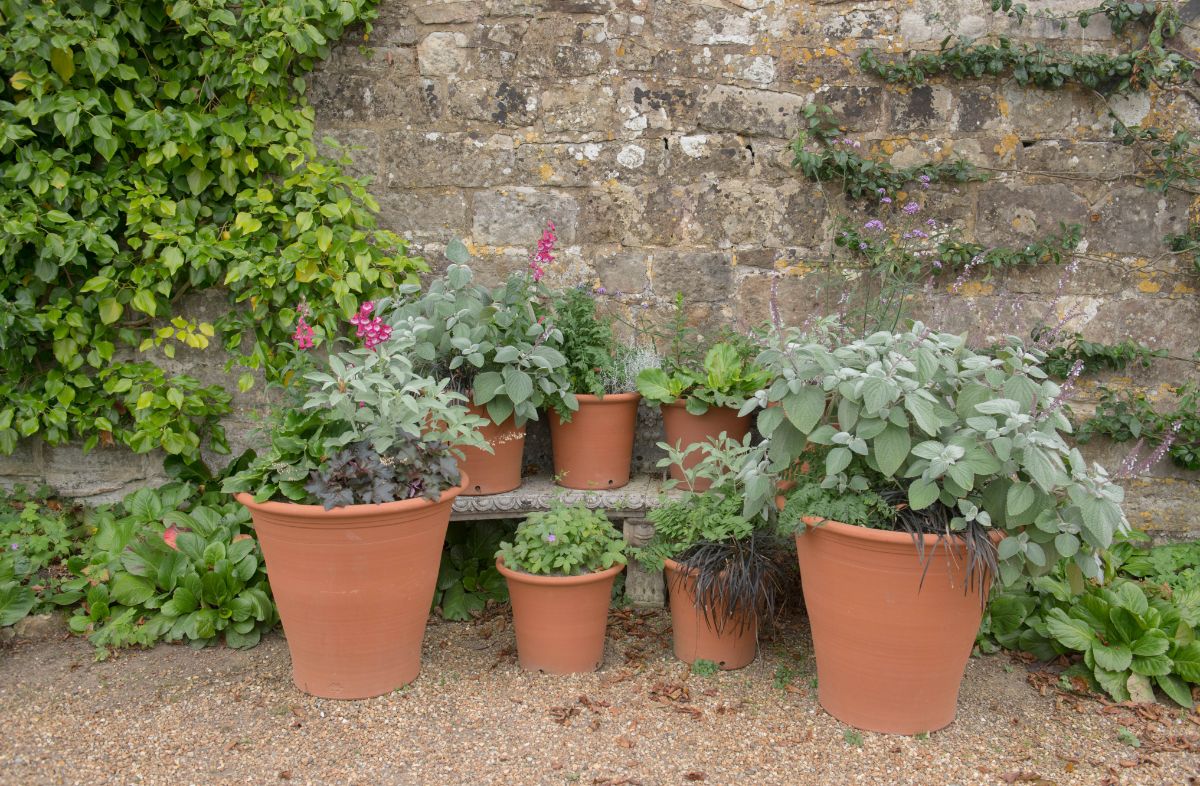
Sage is an excellent potted plant. Terra cotta pots make growing sage or a ‘chicken herb’ pot of sage, thyme, and oregano easy and appealing.
Choose a container with good drainage, fill it with average, well-draining soil, and set it in a spot with at least six hours of sunlight. Ensure the pot has drainage holes–on plastic pots, they are often preformed but need to be poked out with a tool.
Tips for Growing Sage
Sage grows moderately fast in year one but takes off in year two. Be prepared for an abundance of sage. To help it along, follow these tips.
- Pinch young plants. Sage that is unpinched will grow tall and leggy the first year. To force it to branch, give the leader a pinch when it is about 4-6 inches tall.
- Harvest often. Sage will continue to grow new, soft, good-for-the-kitchen shoots if harvested. If it is not harvested, the stems will become woody and the leaves tougher. If you don’t have a use for the fresh sage and don’t want to dry it, use the cuttings to make new plants and give them away.

- Sage likes to have a site that is a bit on the dry side. The soils where sage grows native are drier, a bit stony, and less fertile. Planting sage in a pile of well-watered compost may cause it to succumb to root rot or grow but have a weak flavor. Let it suffer just a little bit.
However, if growing in a container, water it when the top inch or two of soil feels dry to the touch. Container soils dry much faster than soil in the garden, and even though sage likes to be dry, it will need to be watered regularly in a planter.
Do you love sage as much as we do? Share your favorite way to use sage in the comments below.

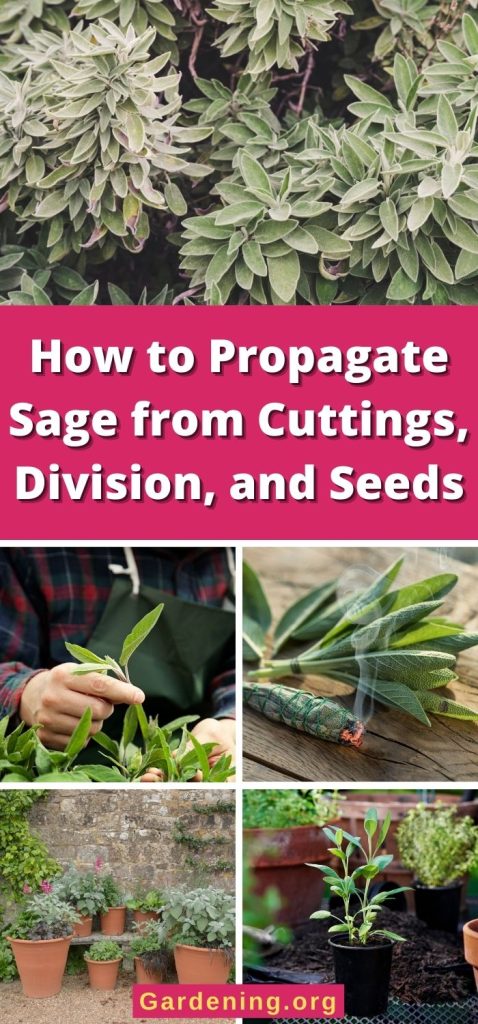
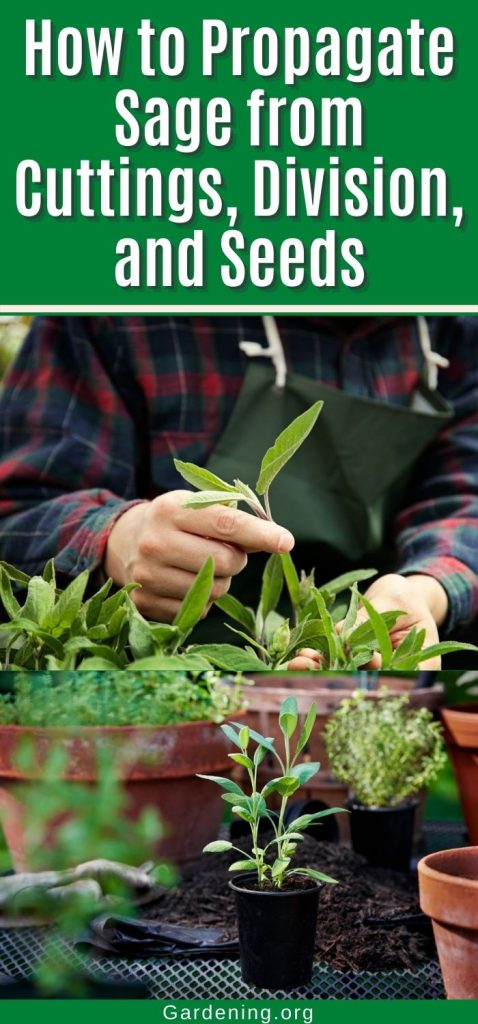
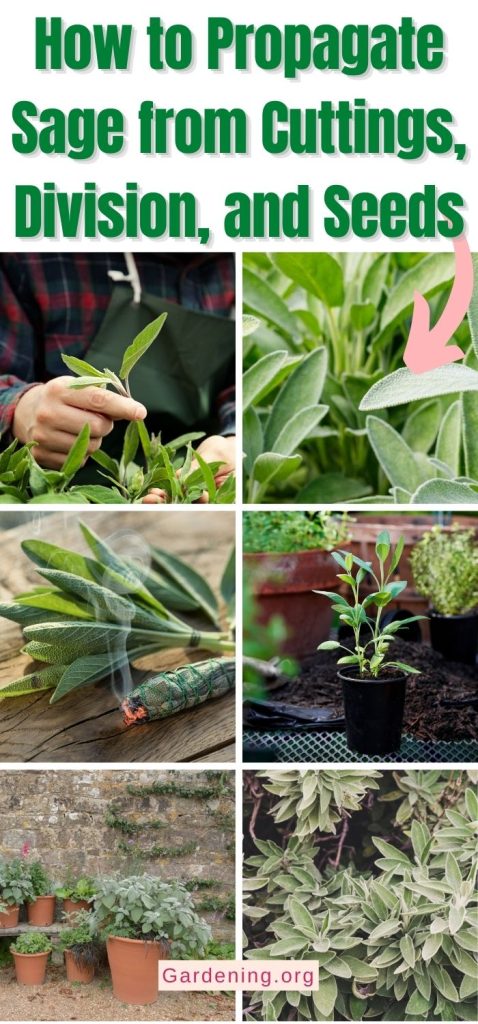
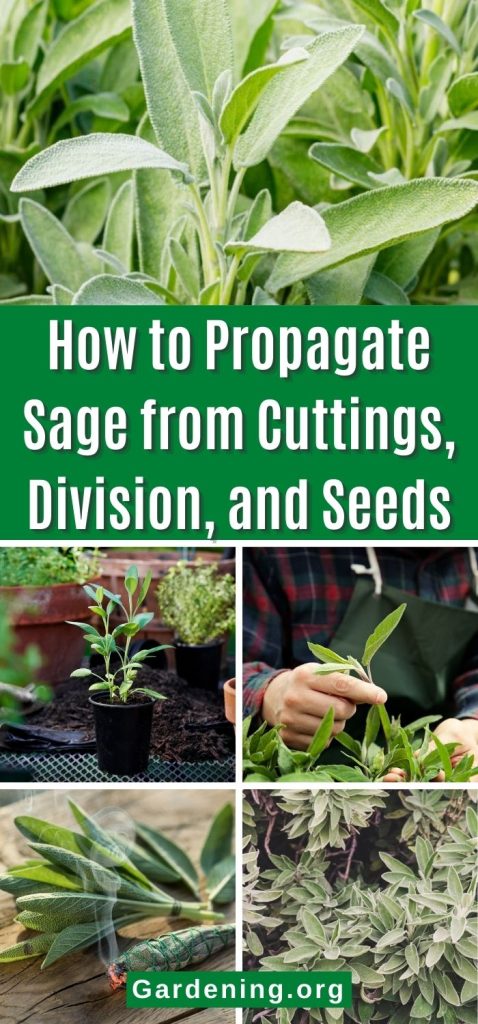
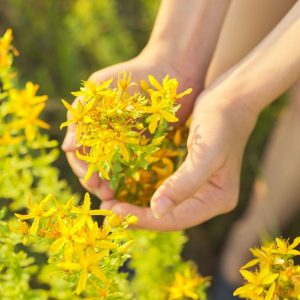



Leave a Reply